The month of March falls onto the arms of this old city with an easy warmth known only to those who have lived and breathed with Kolkata. It brims with promise as it edges toward an indignant summer. When it rains, the city is greener, and when it basks in sunlit glory, the hardened cracks around the roads come alive. Artist Arindam Datta’s exhibition: ‘Memoir’ finds us at this opportune moment, bringing along a sense of looming nostalgia, a fondness for the years that have passed us by.

Tempera on canvas
Size: 15×20 inch
Datta’s striking brush takes us to the most intimate corners of North Kolkata households. His own memories of childhood and boyhood serve as the vessel that leads us onward. As one walks through the gallery, it begins to feel like we are witnessing an entire lifetime play out in front of us. The same yellow boy who faithfully sends a paper-boat on its journey beyond the waterlogged streets, goes on to unabashedly race tires and revel in spinning tops. Soon enough, the vigor of adolescence seeps in through brilliant reds. Datta masterfully uses ripe fruit to symbolize this youth, the taste of apple emerging as a recurrent theme to demonstrate the calls of romantic love.
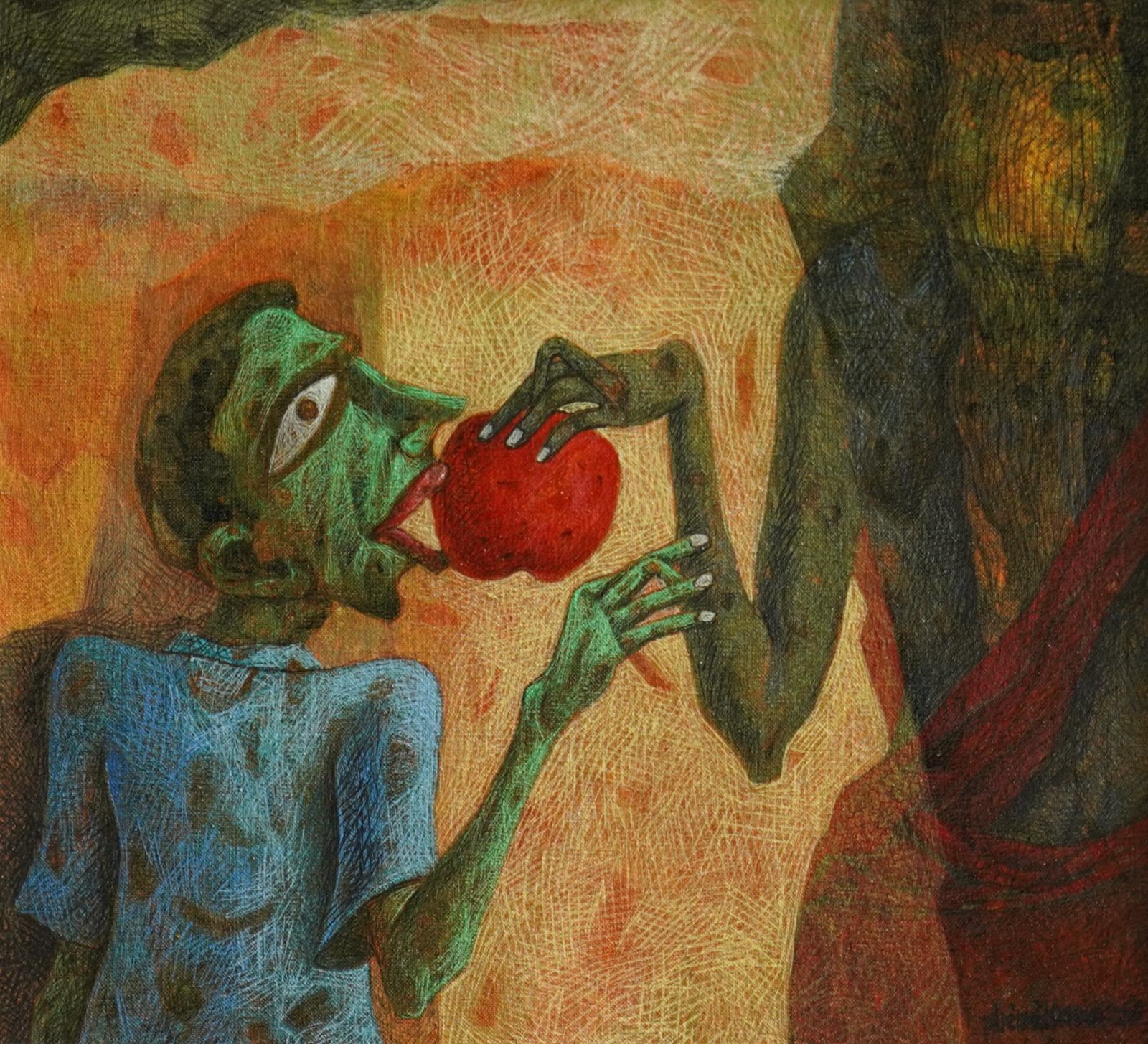
Tempera on canvas
Size: 11.5×12.5 inch
The artist’s gaze manages to maintain a childlike wonder when crafting an astute set of observations into a story. Memory takes on the garb of a narrator, and infinities lurk beyond the walls. The human psyche becomes a pivotal consideration for the artist, on his quest to capture his own self through various stages of being. This self is then constructed through colors of the innermost emotions. The green of youth transforms into lustful red in the stolen moments of some secret rendezvous, while the unattainable blue of the beloved takes on a browner worldliness when love is consumed. There lies a distinct intimacy in the paintings as they traverse the intersections between the heart and the body. Love is shown to be as dream-like as it is real. In one striking image, we find a boy soaring into the skies at the promise of a love affair. In another, love spurns and stings. The dismissal of the lover forms into a poisonous snake, while the apple remains steadfast in its quest for reciprocation.

Tempera on canvas
Size: 15×20 inch
The artist’s personal encounters walk us into his public life and the world outside, through depictions of fond mundanity. Hawkers and lovers, weavers, and singers all come alive in vivid ceremony, through unapologetic blues, greens, and yellows.
Women, through Arindam’s artistry, take on discursive entries into the outside world. The pregnant woman reads to the child in her womb, blue in the dream of possibility. She finds tales that transcend the walls containing both mother and child.
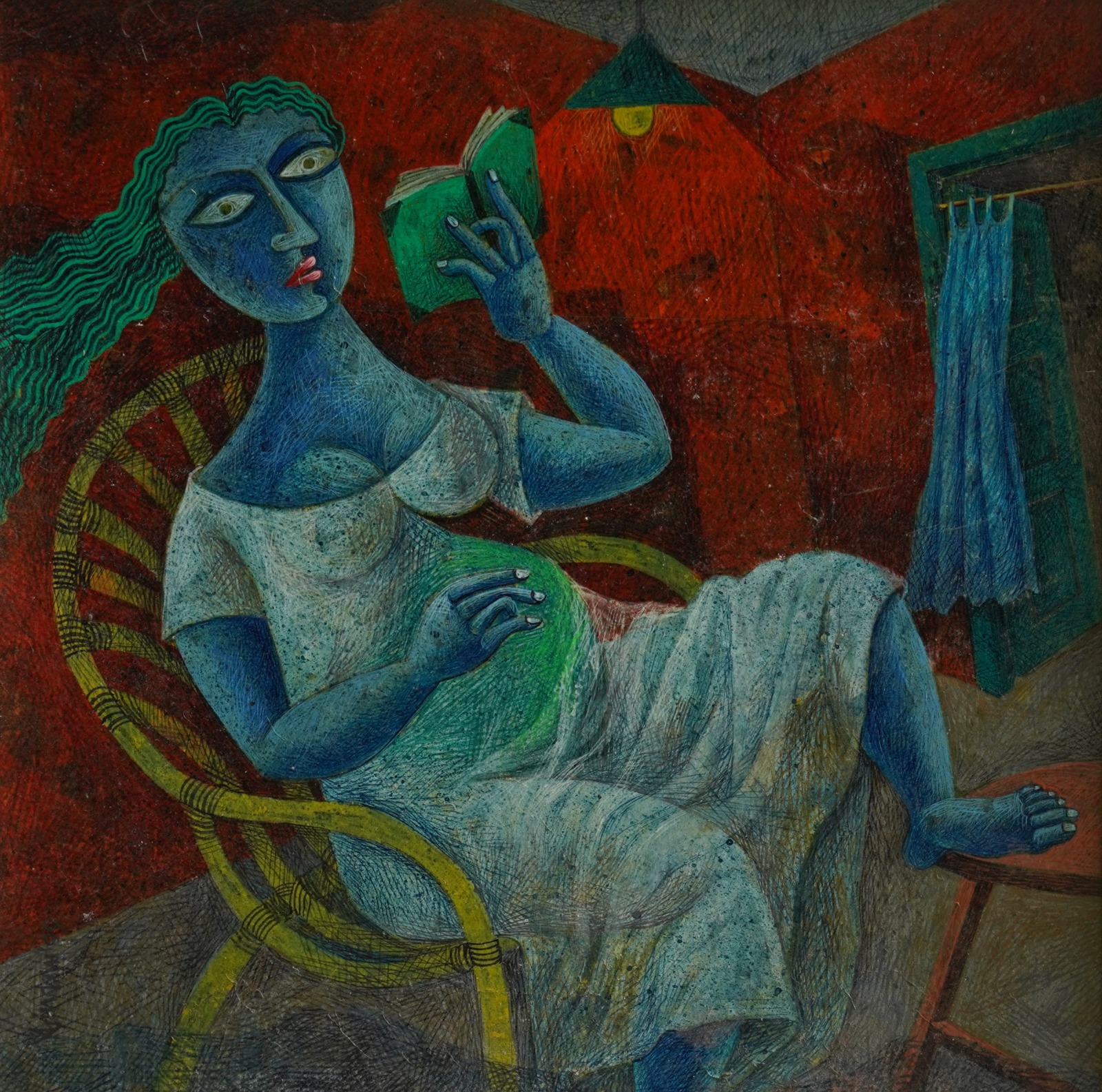
Tempera on paper
Size: 15.5×15.5 inch
The reddened walls of the mother move on to a more restless inhibition in the artist’s portrayal of a woman in the midst of dressing herself. The objects around her cement the familiarity Datta showcases with such ease, but the red in her eyes tells a different tale altogether. The artist says this melancholy gaze is what separates her from the women we have seen thus far. She is readying herself for a performance, and her back is turned away from the imminent departure she will soon settle into.
The blues form into a magical scape of an almost-Vaishnavite musicality. The flute becomes a recurrent image. It seems to allude to a spirituality Datta has enshrined within the ordinary. The nights are calmer here, more peaceful than the paintings of distinct mortality. The artist thrives in these moments of tender devotion.
Negotiations between internal spaces and exterior selves tell many a tale in Datta’s memoir. The dhunuri-wala is seated on the outside of the house, weaving the loom that will bring sleep. Interestingly enough, the artist paints summer in the darkness of a load-shedding night. An elderly woman sits in white against the suffocating heat, fanning in a gentle breeze. A door, in turn, is shown through the visitor’s eye. It is formed within the blackened browns of a house that looks as old as time itself.
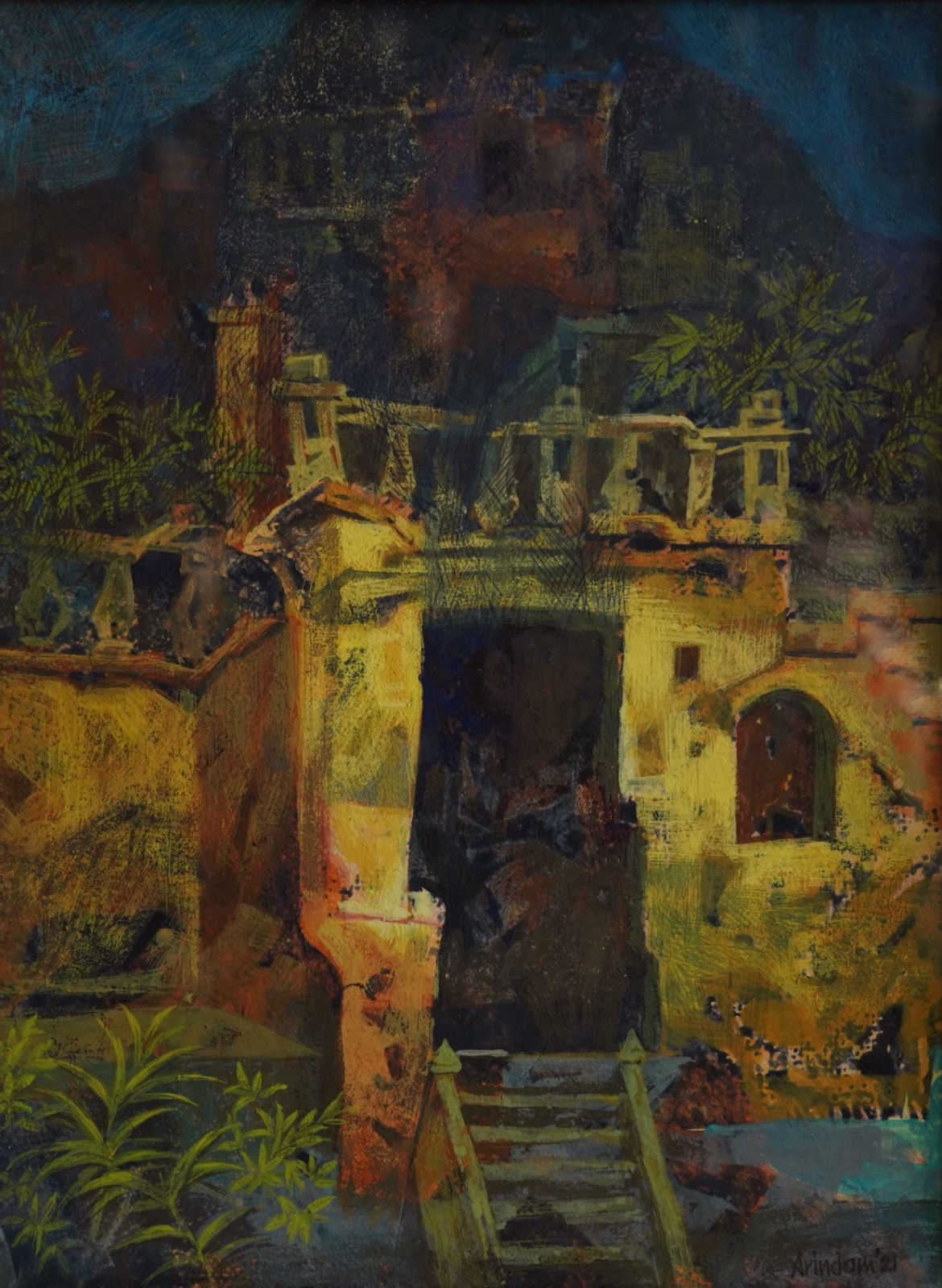
Tempera on paper
Size: 13.5×10.5 inch
‘Memoir’ manages to form a tapestry of human experience where dreams are woven into the fabric of reality. Datta has a way of taking on matters privy only to the solitary heart and painting them in the hues of universality. This is best expressed perhaps, by the artist’s recurrent use of the moon. It looks on unfailingly through scenes of loss and longing, it is there for the joy and the awe. It holds the sky for the gentle paperboat, and guards the night that leads the lady into her darkest sorrows. It bides the hour of the jatra, and rejoices with the notes of some distant flute. These people live very different lives. Their dreams are different, as are their walls. And yet, they all form into some habituality, they speak for the North Kolkatan corners that have birthed them. The city shapes into the people Arindam paints. All at once, these people are born of the city, their existence tied to the soul of this aging metropolis that moves as they do. The artist’s resilient memory rages on against a rapidly industrializing society, keeping the fragile world of auld lang syne safe in his heart and the art that follows. The city belongs to the artist, and the artist to the city. The remembrance is soft, the voice intricately powerful.
Arindam Datta’s ‘Memoir’, housed at the Chhobi-O-Art Gallery, 16 Lake Temple Road, Kolkata – 700029, is an archive of the city, awake and alive, unyielding in the strife to keep on dreaming.


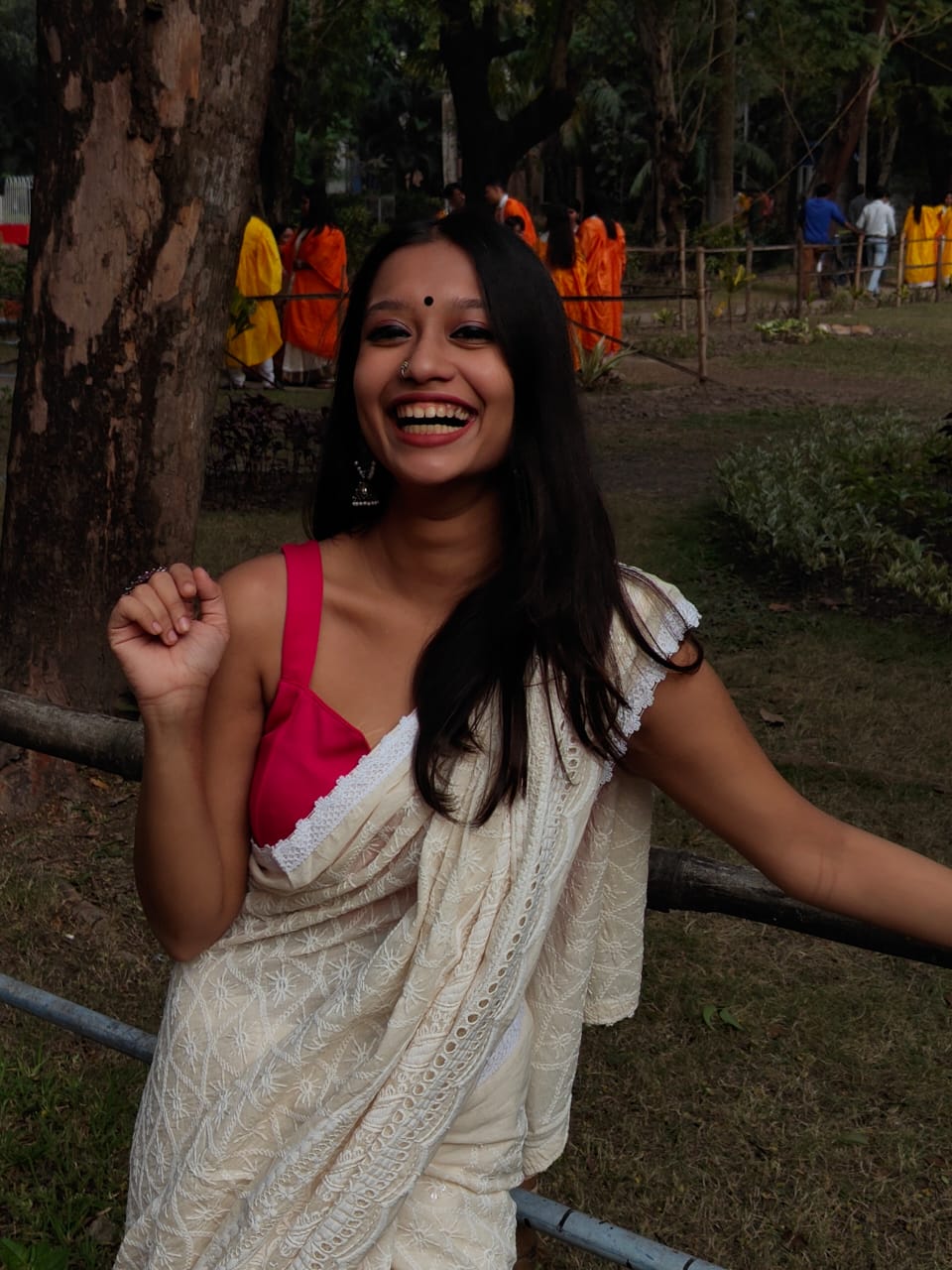

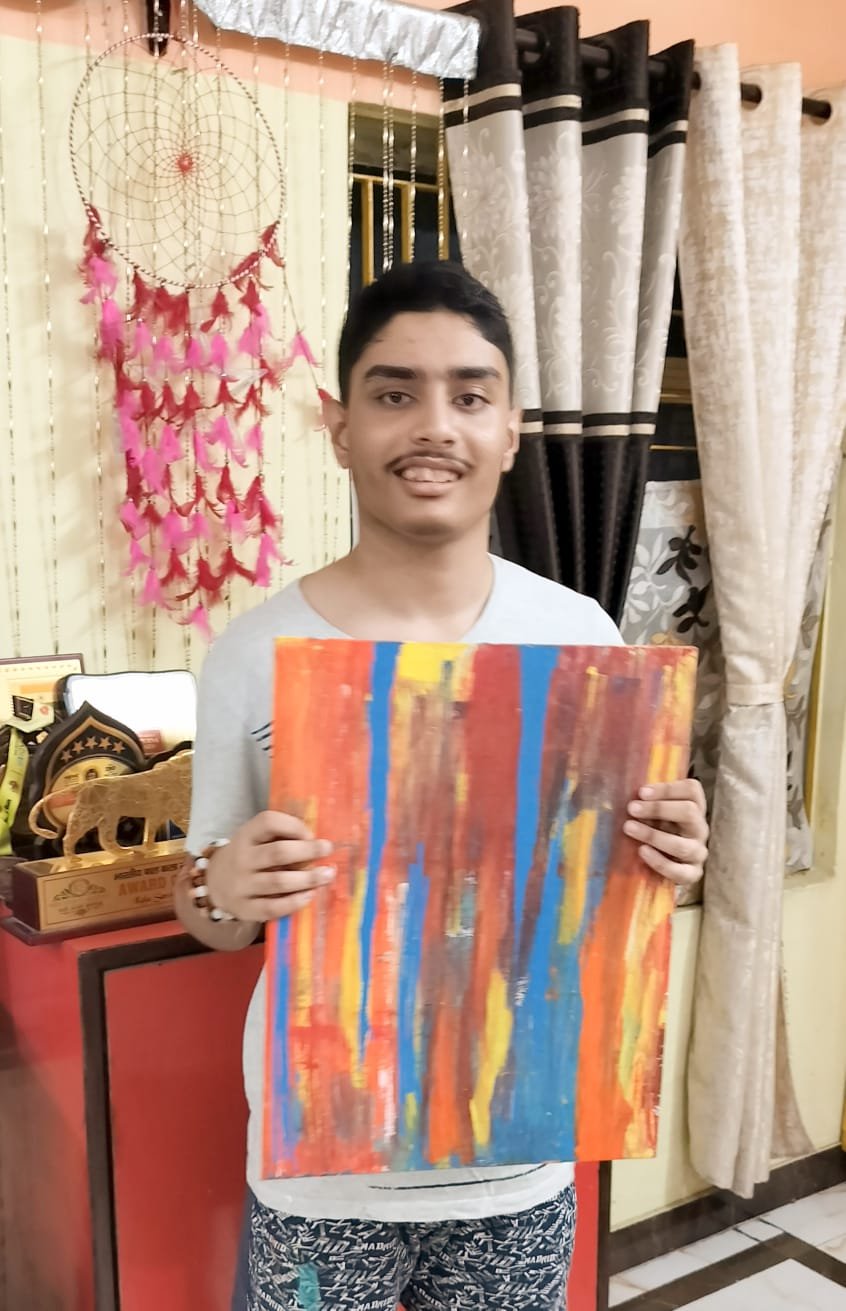

One Response
The review is poetry in itself.